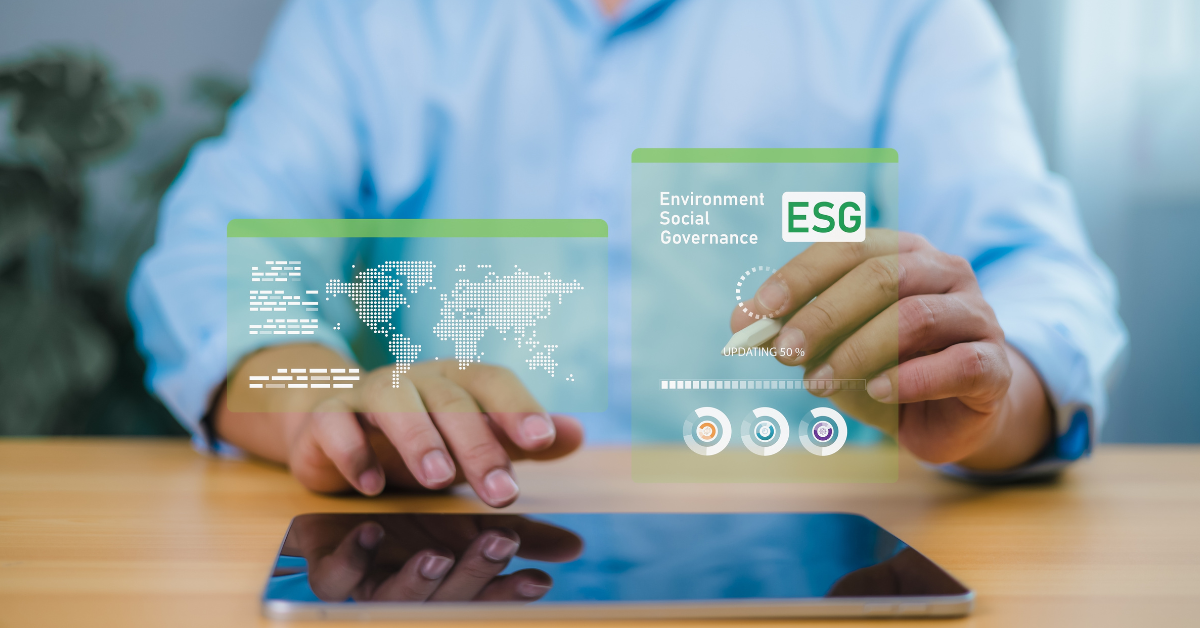
Discover how to choose the right ESG reporting tool for your organization. Explore key features to drive sustainable performance.
As ESG becomes a core element of business strategy, organisations are increasingly turning to reporting tools—not just to meet stakeholder expectations, but also to drive smarter decisions and more efficient resource utilisation.
ESG reporting is no longer a box-ticking exercise: when approached strategically, it becomes a powerful framework for improving performance, identifying risks and opportunities, and accelerating growth.
While transparency remains important for regulators, investors, and customers, the true value of ESG reporting lies in its ability to serve the business itself.
Choosing the right ESG reporting tool is therefore not just a compliance task—it’s a strategic investment. From investors and regulators to customers and employees, stakeholders are requesting measurable data and business transparency to satisfy regulatory and market needs.
In response, ESG reporting tools have become indispensable for organizations aiming to track performance, align with global standards, and future-proof their operations against rising compliance requirements.
Selecting the right tool, however, involves more than just checking off technical specifications; it requires a strategic assessment of features, integration capabilities, and long-term adaptability.
Understanding ESG Reporting Tools
ESG reporting tools are software platforms specifically developed to assist organizations in efficiently gathering, analyzing, managing, and disclosing comprehensive data concerning their environmental, social, and governance (ESG) performance.
These digital solutions significantly enhance the accuracy, consistency, and transparency of sustainability reporting by automating data collection processes, enabling real-time tracking of critical ESG metrics, and simplifying compliance with diverse and evolving global frameworks such as GRI, SASB, EFRAG, and the EU's CSRD.
Considering the multifaceted nature of ESG data, which spans from greenhouse gas emissions, energy efficiency, and resource usage to employee health and safety, diversity and inclusion initiatives, human rights compliance, and corporate governance practices, these advanced tools have become indispensable.
Key Considerations in Selecting an ESG Reporting Tool
Selecting the appropriate ESG reporting tool requires careful evaluation of several critical factors, ensuring that your chosen solution not only meets your current sustainability reporting needs but also remains adaptable to future developments.
Below are key considerations to guide your decision-making process:
1. Alignment with Regulatory Requirements
The regulatory environment for ESG reporting continues to rapidly evolve, marked by significant shifts such as the European Union’s recent Omnibus Directive, which has substantially altered the scope of sustainability disclosure obligations.
Notably, the Omnibus Directive has reduced by approximately 80% the number of companies originally required to comply with the Corporate Sustainability Reporting Directive (CSRD),
Although still pending approval, the proposed Omnibus Directive would significantly reduce the number of companies required to comply with the CSRD by as much as 80%.
This evolving regulatory landscape highlights why ESG reporting shouldn’t be seen as a burden or an external obligation, but as a smart business move.
Forward-looking companies are increasingly adopting voluntary frameworks like EFRAG’s LSME and VSME standards—not because they must, but because they recognize the operational value of tracking ESG data through a reliable platform.
Consequently, organizations must select ESG reporting tools that demonstrate elasticity, capable of adapting swiftly and effectively to ongoing regulatory adjustments.
Such flexibility ensures continued compliance, reduces the risk of legal repercussions, and positions companies to respond proactively as regulatory landscapes continue to change.
2. Comprehensive GHG Emissions Tracking
Given the emphasis on environmental impact, particularly GHG emissions, the selected tool should offer robust capabilities in tracking and managing these emissions.
This includes the ability to measure emissions across all scopes:
- Scope 1: direct emissions from the business activity,
- Scope 2: indirect emissions from purchased energy,
- Scope 3: indirect emissions occurring in the value chain.
In this context, accurate GHG accounting is essential for setting reduction targets and demonstrating progress to stakeholders.
Tools that align with established protocols, such as the GHG Protocol, provide standardized methods for quantifying emissions, enhancing the credibility of your reporting.
3. Integration with Existing Systems
An ESG reporting tool should seamlessly integrate with your organization's existing data management systems.
This integration facilitates efficient data collection and minimizes the need for manual data entry, thereby reducing errors and saving time.
Compatibility with Enterprise Resource Planning (ERP) systems, Customer Relationship Management (CRM) software, and other relevant platforms ensures a holistic approach to data management.
4. User-Friendliness and Accessibility
The usability of the reporting tool is a critical factor that influences its adoption across the organization.
A user-friendly interface with intuitive navigation ensures that personnel at different levels can effectively utilize the tool thanks to features such as customizable dashboards, real-time data visualization, and automated reporting which enhance the user experience.
Moreover, choosing a cloud-based solution offers accessibility from various devices and locations, promoting collaboration among teams, especially in a hybrid work environment.
5. Customization and Scalability
Every organization has unique ESG priorities and reporting needs.
Therefore, the ability to customize the reporting tool to align with specific metrics, industry standards, and organizational goals is vital.
Furthermore, as your organization grows, the tool should be scalable to accommodate increased data volumes and more complex reporting requirements.
In this context, scalability ensures that the tool remains relevant and effective as your ESG initiatives evolve.
6. Data Security and Compliance
Given the sensitive nature of ESG data, robust security measures are non-negotiable.
The reporting tool should comply with data protection regulations and implement stringent security protocols to safeguard against unauthorized access and data breaches.
Features such as encryption, multi-factor authentication, and regular security audits are indicators of a secure platform, ensuring that data integrity not only protects the organization but also builds trust with stakeholders.
7. Support and Training
Implementing a new ESG reporting tool requires adequate support and training to ensure a smooth transition.
To ensure it, assess the level of customer support provided by the platform vendor, including availability, response times, and access to technical experts.
Comprehensive training resources, such as tutorials, webinars, and user manuals, facilitate effective utilization of the tool, while ongoing support and regular software updates are indicative of a vendor's commitment to customer success.
The Importance of Standardization in ESG Reporting
Standardization plays a crucial role in ESG reporting by ensuring consistency, comparability, and reliability of data.
Organizations like the Global Reporting Initiative (GRI) and the Carbon Disclosure Project (CDP) have developed frameworks that guide companies in disclosing their ESG performance.
Adopting a reporting tool that aligns with these standards facilitates transparent communication with stakeholders and enhances the credibility of the reported information.
While standardization supports comparability and transparency, the ultimate value of ESG reporting lies in a company’s willingness to be accountable, not because it must, but because it chooses to be.
In this light, the adoption of robust ESG reporting tools becomes a tangible expression of corporate integrity.



